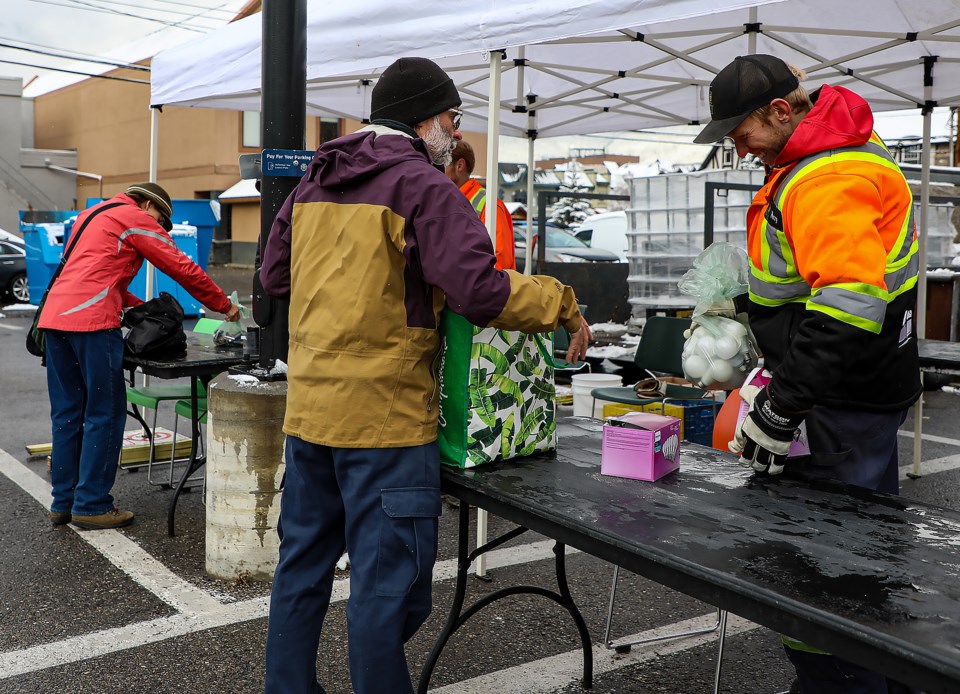BANFF – An updated document to help the Town of Banff achieve its waste diversion goal of 70 per cent by 2028, with the ultimate goal of avoiding any waste being sent to landfill, will establish new actions to attain its objectives.
Town council approved the Zero Waste Action Plan at its July 10 meeting and directed municipal staff to return at 2023 service review with potential budget requests for projects to help achieve its intent.
“For me, this is taking action on those aspirational goals and building on the successes of how far we’ve come, especially since 2019, and really taking it to the next level,” said Banff Mayor Corrie DiManno.
“I feel a lot of the low-hanging fruit has already been plucked, so we need to continue pushing and the reality is that it’s going to come with some budget requests … but what [staff] can’t do needs to be covered and I think having this conversation at service review when we have the bigger picture in front of us is the most appropriate place to have it.”
Among the actions potentially returning for service review are messaging to have residential and non-residential waste move towards zero waste, looking at possible technologies or bylaws that would help divert waste and working with the business and non-profit sectors for a town-wide reusable system for takeaway cups and containers.
Carla Bitz, the Town’s environmental coordinator, said the municipality has achieved increasing rates of diversion with 52 per cent of waste being diverted and the remaining 48 per cent going to landfill.
In 2018, 35 per cent was diverted and 65 per cent went to landfill.
A staff report highlighted the 70 per cent goal by 2028 is possible, but “it will require significant efforts.”
“To reach our target of 70 per cent by 2028, we’re going to have to focus on designing waste out of our system and not just managing and diverting it,” Bitz said, highlighting bylaws such as the single-use reduction are important actions in achieving those goals.
The plan updates the Waste Diversion Targets and Tactics plan approved by council in 2018, which includes data insights and pandemic impacts.
“Reducing and diverting waste to landfill is critical to maintaining the well-being and sustainability of our community,” a staff report noted. “While significant progress has been made, our community still generates waste at a rate that is not in alignment with sustainable ecological limitations or the Banff National Park context.”
The new plan has seven focus areas in residential waste diversion; non-residential waste diversion; single-use items and packaging reduction; reducing consumption; pedestrian bin waste streams; construction, renovation and demolition materials and material management and emissions.
The total operating and capital impact is estimated to be $716,000 in 2024, but falls to $438,000 in 2025 and $435,500 in 2026.
A 2022 waste characterization study conducted in summer and fall 2022 analyzed the materials that could be diverted from Banff’s landfill stream. Non-residential food waste was the highest at 23 per cent as was residential food waste at 22 per cent.
“Reduction of organic material, primarily food waste and food-soiled paper, remains Banff’s most significant diversion opportunity for the non-residential section,” stated the Zero Waste Action Plan.
The plan noted public communications is key for messaging, but due to the Town’s population turnover makes it “continual and significant.”
Bitz highlighted Town staff have engaged local organizations, including training employees to help inform locals and visitors about waste diversion options.
“That’s one of the key outreach tactics that could be effective in changing the residential waste story and that idea of how we do things in Banff and making it a norm,” Bitz said.
Banff also has a waste transfer site and a re-use it centre in the industrial compound. Banff Public Library’s Library of Things has also been popular both from an affordability and reusing option.
“We [want to] exhaust as much as possible in our communications,” Bitz said. “We think there’s an opportunity for a social norm shift as far as what we expect from residents with our environmental initiatives and a possible strong connection with the climate action campaign we’re looking at.”
The majority of the waste from the Bow Valley is sent to West Dried Meat Lake Regional landfill in Camrose County for a roughly eight-hour roundtrip.
Bitz noted the annual materials sent to landfill and the emissions from it are 3,858 tonnes of carbon dioxide equivalent (tCO2e), which accounts for roughly two-thirds of Banff’s overall facilities emissions.
“It’s really not an insignificant number. The majority of those emissions are coming from the organic material that’s still ending up in landfill. … As far as a low-hanging fruit action we can take to cut a significant amount of emissions, looking at a closer facility that has methane capture is one of those actions we’re going to want to consider,” she said.




